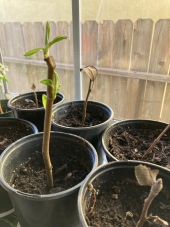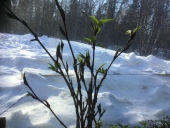


Unofficial Companion Guide to the Rocket Oven DVD
will be released to subscribers in:
soon!







 4
4




A build too cool to miss:Mike's GreenhouseA great example:Joseph's Garden
All the soil info you'll ever need:
Redhawk's excellent soil-building series






 9
9




List of Bryant RedHawk's Epic Soil Series Threads We love visitors, that's why we live in a secluded cabin deep in the woods. "Buzzard's Roost (Asnikiye Heca) Farm." Promoting permaculture to save our planet.




Other people may reject you but if you lie in the forest floor for long enough the moss and fungi will accept you as one of their own!




Bryant RedHawk wrote:The first thing to change is your growing medium, coir is not the best for anything to sprout in, first off because when you want to transplant to a larger container or into the ground the coir has to go with it, the roots would break off if you tried to remove the coconut coir.
[...] I use sharp sand mixed with ground vermiculite (vermiculite is mica that has been heated and it not only holds water but it also provides some minerals).

 2
2
















 1
1




List of Bryant RedHawk's Epic Soil Series Threads We love visitors, that's why we live in a secluded cabin deep in the woods. "Buzzard's Roost (Asnikiye Heca) Farm." Promoting permaculture to save our planet.









Works at a residential alternative high school in the Himalayas SECMOL.org . "Back home" is Cape Cod, E Coast USA.










M. Korsz wrote: I grafted some figs that also leafed out and started growing but then failed. Only one of them survived. I think the issue I had which sounds like yours as well, is the growing medium was too wet. I believe it was root rot that killed mine.
...
Other people may reject you but if you lie in the forest floor for long enough the moss and fungi will accept you as one of their own!





